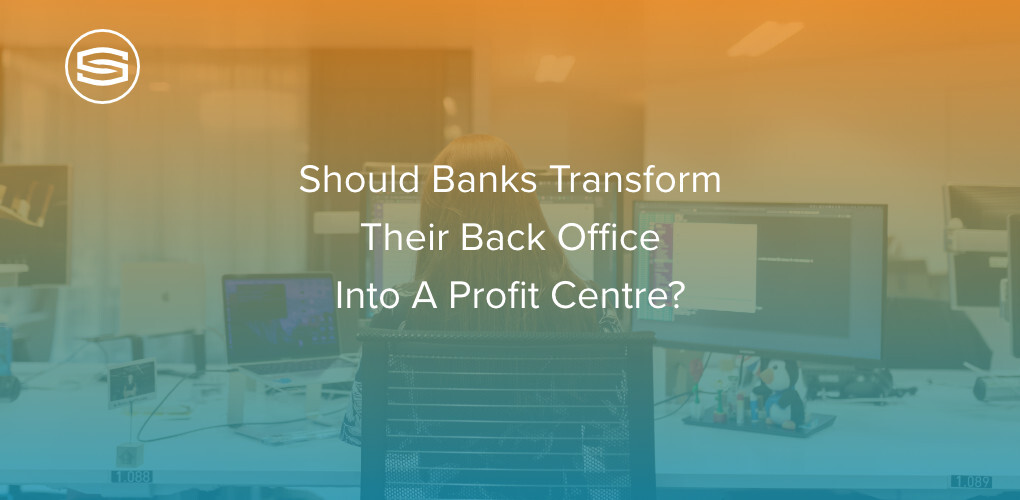
Insights & Opinions
Should Banks Transform Their Back Office Into A Profit Centre?
Mon, 06 Nov 2023


A few months back, I discussed with TriFinance’s Olivier Heindryckx the transformative forces in a bank’s middle and back office. A front office cannot transform without the support of the middle and the back office, and that can be challenging. What are the challenges and how can they be overcome?
Automation programs and the recent rise of AI have been helpful for banks to minimise the workload in their middle and back office operations. The main objective of these investments is to reduce the number of full-time employees (FTEs). However, this creates a new challenge, as a smaller team of experts with more knowledge now handles the work. Moreover, these experts are getting older, and it is becoming increasingly difficult to find skilled talent to replace them.
Due to more regulations, extra knowledge is required, and experts are often tasked with handling pure exception-handling tasks. As a result, they no longer deal with basic tasks, and the questions that they need to address are often so exceptional that there is little or no documentation available to help them.
To make matters worse, people don’t like to work in a cost centre, and that is how the middle and the back office are being framed.
How do banks look at these challenges? I decided to reach out to the industry, to hear how they fight these ‘monsters and myths’. One suggestion intrigued me a lot.
Challenge, Accepted!
The thesis goes: why don’t we transform the middle and back office into a profit centre?
It is evident that banks are moving from traditional branches to digital platforms, with some countries experiencing a greater shift than others. For instance, ABN AMRO, one of the major banks in the Netherlands, now operates only 25 branches across the entire country.
It is a new reality where banks interact with their clients through digital channels, a reality where conversion levels to sell products or services are lower compared to person-to-person contact.
Truth be told, the number of touch points in a digital environment is luckily much higher, so the lower conversion levels will not automatically generate lower sales. People simply connect more with their bank than ever before but for very targeted information or services.
As the apps continue to evolve, more complexity is added to these front-end channels, but the knowledge of those processes is increasingly pushed to the back and the middle office, adding to the pressure on the knowledge experts in the support line.
As branches disappear, experts are pushed to the back of the bank. They only talk to the world in the case of an exceptional problem, because everything is digitalised in the journey of a client.
The Opportunity
My friend argued that we are evolving to a situation where the back and middle office has more human contact with the bank’s clients than the actual front office, and banks are sales organisations. How can banks improve their sales targets in a world where branches are on the road to extinction in some countries? In a world, where contact with commercial people is reduced to a minimum for the majority of retail clients?
Given the higher frequency of customer contact with the middle and back office, why don’t we give these people in the back a commercial mandate as well? How would that translate in conversion rates?
Would it be an idea, if a customer contacts the bank with a problem regarding their MiFID questionnaire for example, to let the middle officer grasp the moment to ask the client a couple of questions to better understand their financial needs, to guide them to the right investment product?
Would it be an idea, if a customer contacts the bank to unblock a credit card on vacation, that the middle officer suggests an upgrade for the future, so the customer is insured against exceptional travel events?
What if banks decided to transform these cost centres into profit centres, lifting the perception of these entities, making them more attractive to work for, while improving their top line through the personal contact these people have while solving a customer problem?
Is It Feasible?
It will require yet another skill set on top of what these experts must already master. It still needs to be seen whether the same problem-solving profiles are the ones suitable for more commercial tasks.
Also, the direction of these departments will need to shift, as KPIs today evaluate automation and efficiency, not customer intimacy and revenues. These are 2 contradicting measurements.
How will they be incentivised? Are these people even interested in getting an additional hat on top of the many they carry already?
“The middle and back office workforce will need to become more bankers again”, explained my friend: “By nature, a bank is a sales organisation, and it will make more effort to stimulate sales rather than improving the straight-through-processing rate through automation”.
As I’m writing this, I also think: is a client in need the best target for a sales contact? Won’t a survival mode of a client with a critical problem worth contacting the helpdesk not block them from opportunities by their bank? I don’t know.
On the other hand, if a bank can successfully build this model, I believe it does solve one of the problems set by Olivier Heindrycks: “New talented people often prefer another career path, so one of the challenges is to explain, educate and convince people that the expert in the middle and back office is no longer the same as 20 years ago. HR has an essential role to play. They should facilitate more internal mobility in a bank and clarify that 2 - 3 years in the middle or back office is a good transition for people who desire a front office job in a branch or the dealing room”.
By making the middle and back office a profit centre, it becomes a hybrid model that can perfectly replace the front office, that may no longer exist in a couple of years for some departments anyway.
What do you think? Does all this make sense?



